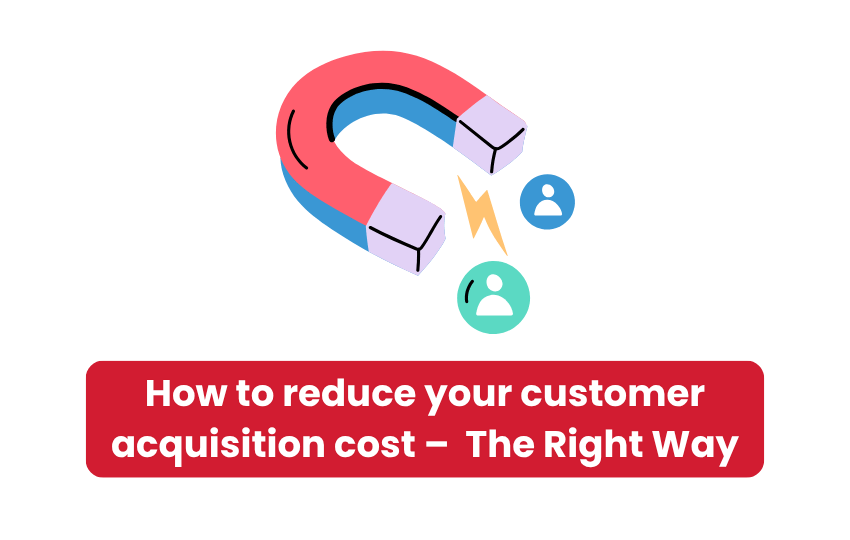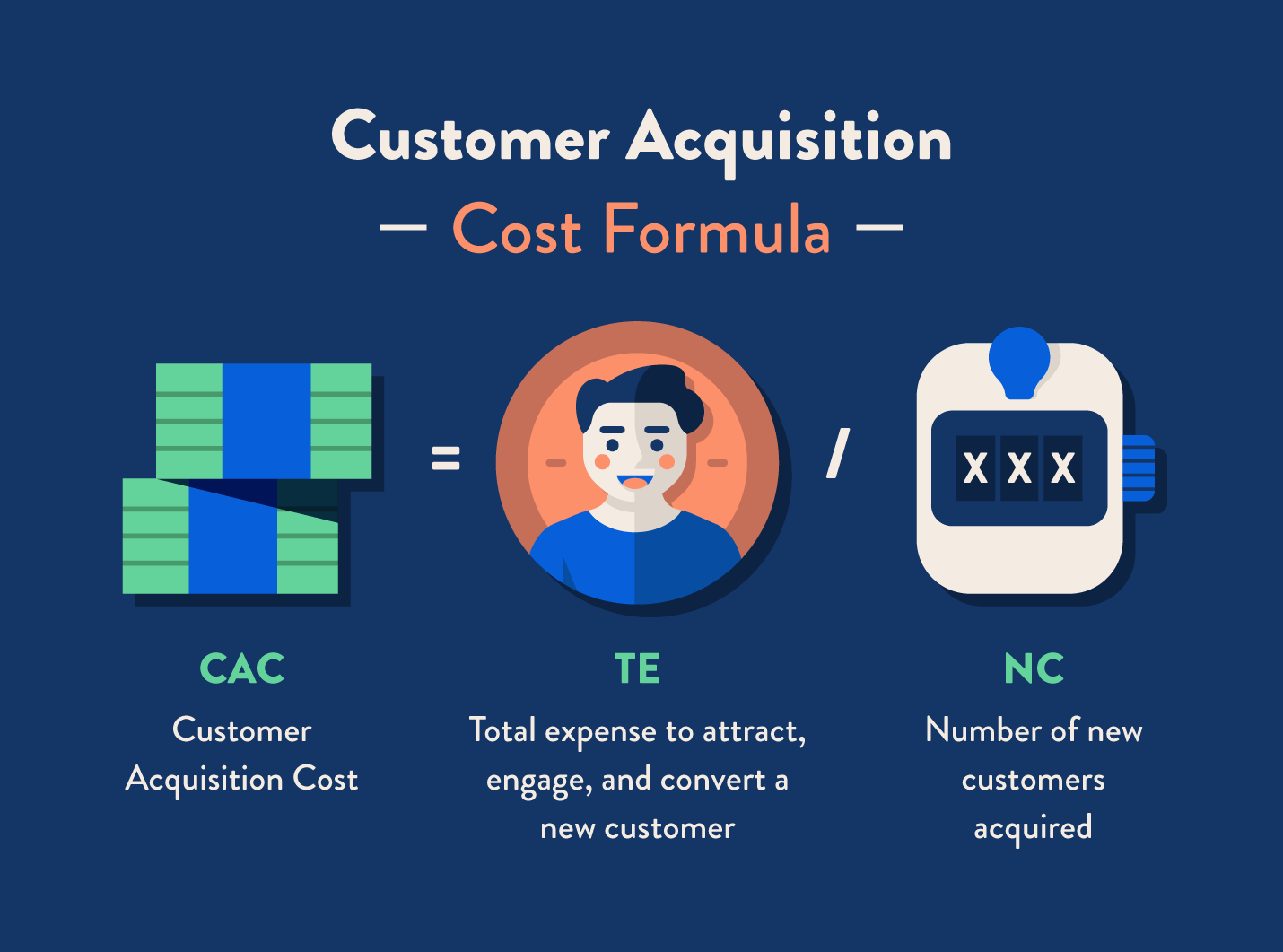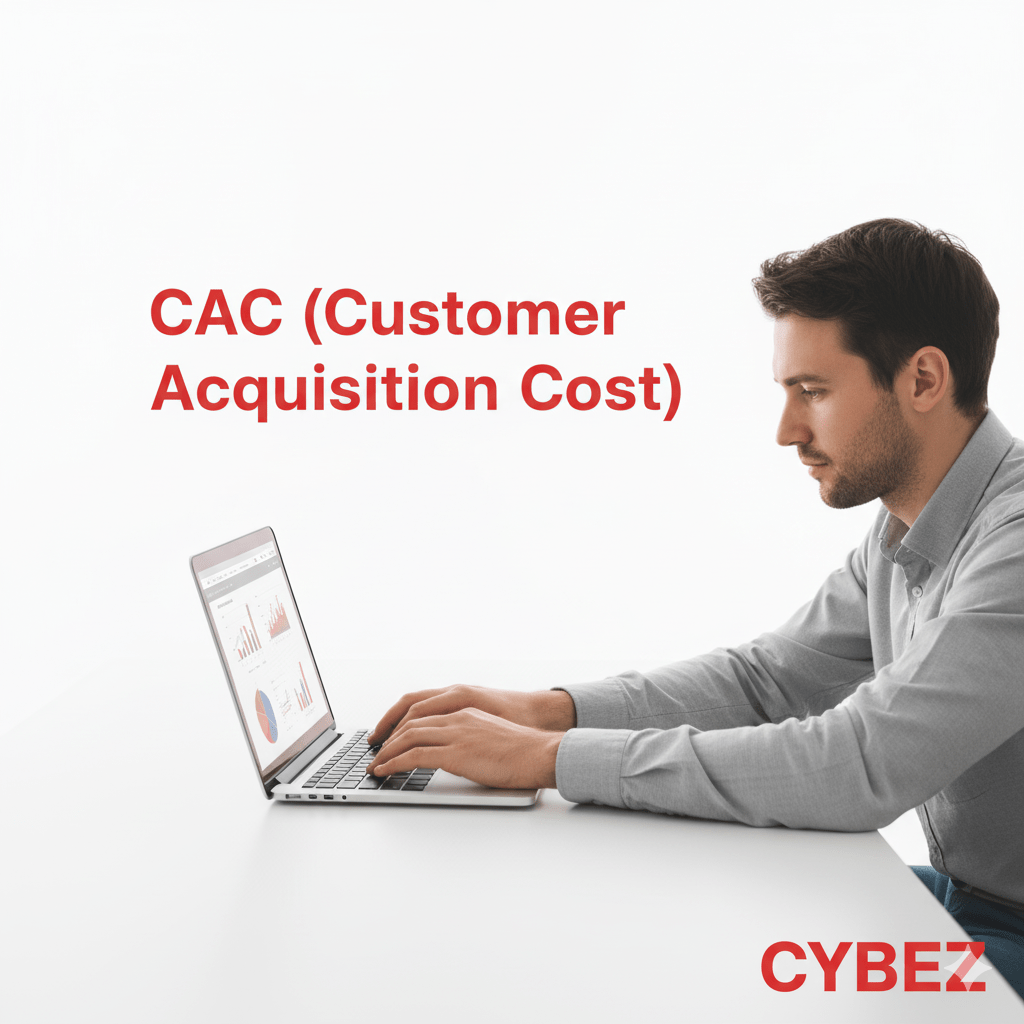
Optimizing Customer Acquisition Costs: 5 Techniques To Reduce CAC with Data-Driven Marketing
In the ever-competitive digital landscape, businesses are constantly striving to reduce costs while enhancing their reach. One of the most significant metrics for businesses to focus on is Customer Acquisition Cost (CAC). High CAC can undermine profitability and slow down growth, but leveraging data-driven marketing strategies can help businesses optimize their marketing budgets and acquire customers more efficiently.

By using data to make informed decisions, businesses can tailor their marketing strategies, enhance customer targeting, and ultimately reduce CAC. This article explores how data-driven marketing can play a vital role in reducing CAC.
What is CAC?

Customer Acquisition Cost (CAC) refers to the total cost incurred by a business to acquire a new customer. It encompasses all marketing and sales expenses involved in persuading a potential customer to make a purchase. A study by Bain & Company has found, in fact, that only a 5% increase in customer retention can account for more than a 25% increase in profit.
- Components of CAC:
CAC includes costs related to advertising, sales team salaries, marketing campaigns, software tools, and other promotional activities aimed at attracting and converting leads into customers.
- Impact on Profitability:
CAC directly affects a company’s profitability. The higher the CAC, the more revenue the business needs to generate to maintain a healthy profit margin. A high CAC can eat into profits, making it harder to sustain growth.
- Reducing CAC for Efficiency:
Reducing CAC while maintaining or improving the quality of customer acquisition is vital for businesses to grow efficiently. Lowering CAC helps improve overall profitability and creates more room for reinvestment in business growth.

5 Ways to Reduce CAC with Data-Driven Marketing
Here are five ways you can reduce your customer acquisition cost with data-driven marketing:
1. Refining Customer Segmentation
Refining customer segmentation helps businesses target the right audience more effectively, reducing marketing spend and boosting conversions through tailored strategies.
- Behavioral Insights:
Data analysis identifies customer behavior patterns, such as browsing habits and purchase history, allowing businesses to target high-conversion prospects. This insight helps tailor offers and campaigns to individuals most likely to engage and make a purchase. - Demographic and Psychographic Segmentation:
Segmenting customers based on demographic factors (age, gender, income) and psychographics (values, interests, lifestyles) allows businesses to create highly personalized campaigns. Tailored messaging resonates with specific audience groups, improving engagement and driving higher conversion rates. - Geo-Targeting:
Understanding geographic preferences enables businesses to create location-specific campaigns. By targeting customers based on their location, businesses can deliver more relevant offers and promotions, increasing the likelihood of conversion and reducing ad spend on irrelevant audiences.
Example: Nike uses customer data to segment users based on purchasing behaviors and geographic location, offering location-specific promotions and tailoring product suggestions. This strategy has led to more personalized campaigns and reduced ad spend on irrelevant customers.
2. Optimizing Ad Campaigns with Real-Time Data
Real-time data helps businesses optimize ad campaigns quickly, improving efficiency and minimizing waste by directing budgets to high-performing strategies.
- Immediate Adjustments:
Real-time data enables businesses to quickly identify underperforming ads and make immediate adjustments. By reallocating resources to top-performing ads, businesses can maximize their marketing impact while reducing the cost of ineffective campaigns and improving overall efficiency. - Cost-Effective Spending:
By tracking key performance indicators (KPIs) like click-through rates (CTR), cost-per-click (CPC), and conversion rates, businesses can fine-tune their ad spend. This ensures that marketing budgets are focused on strategies that deliver the best return on investment. - A/B Testing:
Data-driven A/B testing allows businesses to experiment with different ad versions to see which performs best. By comparing variations in messaging, design, and targeting, businesses can optimize their ad creatives and improve overall campaign performance, maximizing marketing efficiency.
Example: Amazon utilizes real-time data to optimize their advertising campaigns. Through constant testing and adjusting based on metrics, Amazon ensures its ads reach the most relevant customers, thus improving its ROI and reducing CAC.
3. Personalizing Marketing for Increased Conversion Rates
Personalization is a powerful tool to increase engagement and conversion rates.
- Tailored Offers:
By analyzing customer data from previous interactions, businesses can create personalized offers that resonate with individual preferences. These tailored promotions increase the likelihood of conversion by presenting relevant products or discounts to customers at the right time. - Customized Email Campaigns:
Personalized email marketing uses data to create subject lines, offers, and recommendations based on past customer behavior. By sending relevant content to each customer, businesses improve engagement, increase open rates, and drive higher conversion rates from email campaigns. - Dynamic Website Content:
Websites can display dynamic content based on a visitor’s browsing history, location, or demographic data. This approach ensures that users see products or content that match their interests, enhancing user experience and increasing the likelihood of conversion.
Example: Spotify personalized playlists and recommendations based on user listening habits. Through this approach, they offer customized music suggestions and promotions, leading to higher user engagement and retention, reducing the need for broader marketing campaigns.
4. Improving Customer Retention
While reducing CAC focuses on acquiring new customers, improving retention also plays a role in lowering overall acquisition costs.
- Customer Feedback Loops:
Data from customer surveys and reviews provides valuable insights into areas for improvement. By actively addressing these concerns, businesses can enhance customer satisfaction, increase loyalty, and reduce the need for costly customer acquisition efforts, fostering long-term relationships. - Loyalty Programs:
By analyzing customers’ purchase behavior, businesses can create tailored loyalty programs that reward repeat purchases. These programs encourage customers to return, enhancing lifetime value and reducing the need to acquire new customers frequently, thus lowering overall customer acquisition costs. - Churn Prediction:
Data analytics can help businesses identify customers who are at risk of churning by analyzing behavioral patterns. By proactively engaging these customers with targeted offers or personalized communications, businesses can improve retention rates and reduce the need for constant new customer acquisition.
Example: Netflix uses customer data to predict when a subscriber might churn, offering personalized retention offers such as a free trial of a new show or additional content. This approach not only improves customer retention but also reduces the need to acquire new customers at a high cost.
5. Leveraging Predictive Analytics
Predictive analytics uses historical data and machine learning to forecast future behaviour, reducing unnecessary marketing spend and improving targeting efficiency.
- Lead Scoring:
Predictive models evaluate the likelihood of conversion based on past behavior and engagement. By scoring leads, businesses can prioritize high-quality prospects, ensuring that sales and marketing resources are focused on leads most likely to result in successful conversions. - Campaign Forecasting:
Predictive tools help businesses estimate the potential outcomes of campaigns by analyzing historical data. This forecasting allows companies to allocate marketing budgets more effectively, optimizing spend and focusing on the strategies that will deliver the highest return on investment. - Customer Lifetime Value:
Predicting customer lifetime value (CLV) helps businesses understand which customers are likely to generate the most revenue over time. By focusing acquisition efforts on high-CLV customers, companies can optimize their marketing strategies and ensure more sustainable and profitable growth..
Example: Zillow, a real estate platform, uses predictive analytics to forecast which leads are most likely to purchase a home. This allows them to focus their marketing efforts on high-potential prospects, optimizing ad spend and lowering CAC.
3 Data-Driven Tools to Use for Reducing CAC
Below are three of the most effective tools to help achieve this goal:
1. Salesforce (CRM Software)
Why it’s Great: Salesforce is one of the most powerful Customer Relationship Management (CRM) platforms, providing deep insights into customer behaviours and interactions. It allows businesses to manage leads, track customer journeys, and automate marketing and sales processes. Salesforce’s analytics tools help identify high-potential leads and ensure that resources are focused on the most promising prospects.
Key Features:
- Advanced analytics and reporting capabilities
- Lead tracking and segmentation
- Automated marketing campaigns
- Customizable dashboards for real-time insights
By using Salesforce, businesses can improve lead management, reduce wasted resources, and build stronger, more targeted marketing strategies, all contributing to a reduction in CAC.
2. Marketo (Marketing Automation Platform)
Why it’s Great: Marketo offers a suite of marketing automation tools that help businesses streamline their marketing efforts and increase efficiency. From email campaigns to social media automation, Marketo enables businesses to nurture leads through personalized communication, improving the likelihood of conversion. It also integrates well with other platforms, creating a seamless workflow for marketing teams.
Key Features:
- Automated lead nurturing and email marketing
- Customer segmentation and targeting
- Advanced analytics and reporting tools
- Integration with CRM systems
Marketo empowers businesses to deliver the right message to the right audience at the right time, ultimately reducing CAC by improving conversion rates and lead quality.
3. Clearbit (Lead Scoring and Data Enrichment)
Why it’s Great: Clearbit provides lead enrichment and scoring capabilities that help businesses understand their prospects better and prioritize high-value leads. By appending additional data to lead profiles, Clearbit gives marketers deeper insights into customer intent, firmographics, and behaviors, allowing for more accurate targeting.
Key Features:
- Real-time lead data enrichment
- Lead scoring to prioritize high-value prospects
- Seamless integration with CRM and marketing automation tools
- Detailed customer profiles with behavioral and demographic data
By using Clearbit, businesses can enhance their lead-generation strategies, ensuring they focus on leads that are more likely to convert. This helps to avoid spending resources on low-potential leads, ultimately reducing CAC.
Conclusion
Cybez understands the importance of reducing Customer Acquisition Cost (CAC) while driving business growth. By leveraging data-driven marketing strategies and powerful tools, businesses can optimize their marketing efforts, target high-value prospects, and ultimately improve profitability.
At Cybez, we help businesses implement effective data strategies to enhance customer segmentation, personalize marketing, and streamline acquisition processes.
Contact us today to learn how we can help you lower your CAC and achieve sustainable business growth.

